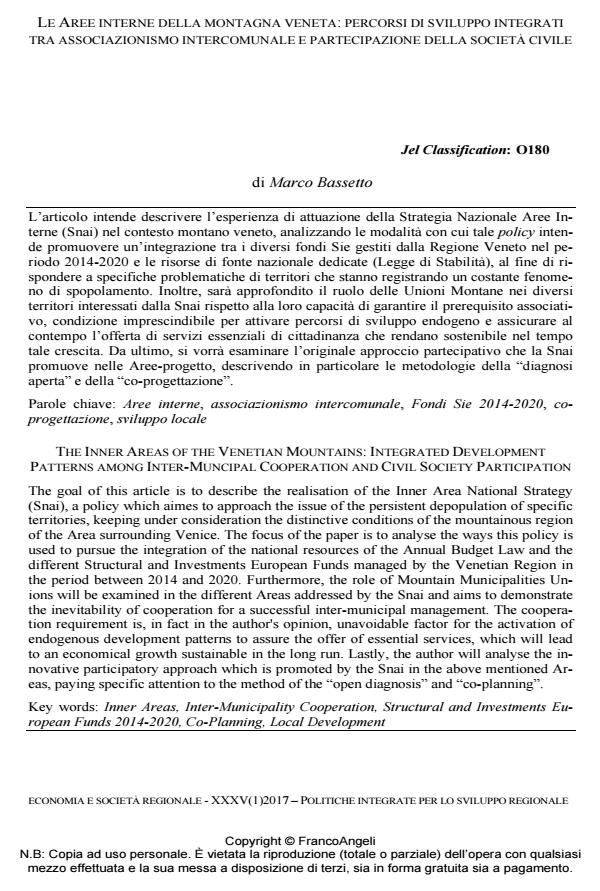The inner areas of the venetian mountains: integrated development patterns among inter-municipal cooperation and civil society participation
Journal title ECONOMIA E SOCIETÀ REGIONALE
Author/s Marco Bassetto
Publishing Year 2017 Issue 2017/1
Language Italian Pages 13 P. 52-64 File size 473 KB
DOI 10.3280/ES2017-001005
DOI is like a bar code for intellectual property: to have more infomation
click here
Below, you can see the article first page
If you want to buy this article in PDF format, you can do it, following the instructions to buy download credits

FrancoAngeli is member of Publishers International Linking Association, Inc (PILA), a not-for-profit association which run the CrossRef service enabling links to and from online scholarly content.
The goal of this article is to describe the realisation of the Inner Area National Strategy (Snai), a policy which aimes to approach the issue of the persistent depopulation of specific territories, keeping under consideration the distinctive conditions of the mountainous region of the Area surrounding Venice. The focus of the paper is to analyse the ways this policy is used to pursue the integration of the national resources of the Annual Budget Law and the different Structural and Investments European Funds managed by the Venetian Region in the period between 2014 and 2020. Furthermore, the role of Mountain Municipalities Unions will be examined in the different Areas addressed by the Snai and aims to demonstrate the inevitability of cooperation for a successful inter-municipal management. The cooperation requirement is, in fact in the author's opinion, unavoidable factor for the activation of en-dogenous development patterns to assure the offer of essential services, which will lead to an economical growth sustainable in the long run. Lastly, the author will analyse the innovative participatory approach which is promoted by the Snai in the above mentioned Areas, paying specific attention to the method of the "open diagnosis" and "co-planning".
Keywords: Inner Areas, Inter-Municipality Cooperation, Structural and Investments Eu-ropean Funds 2014-2020, Co-Planning, Local Development
- The National Strategy for Inner Areas: Innovation, Policy Transfer and Post-Earthquake Reconstruction Brunetta Baldi, in World Political Science /2019 pp.149
DOI: 10.1515/wps-2019-0007
Marco Bassetto, Le aree interne della montagna veneta: percorsi di sviluppo integrati tra associazionismo intercomunale e partecipazione della società civile in "ECONOMIA E SOCIETÀ REGIONALE " 1/2017, pp 52-64, DOI: 10.3280/ES2017-001005